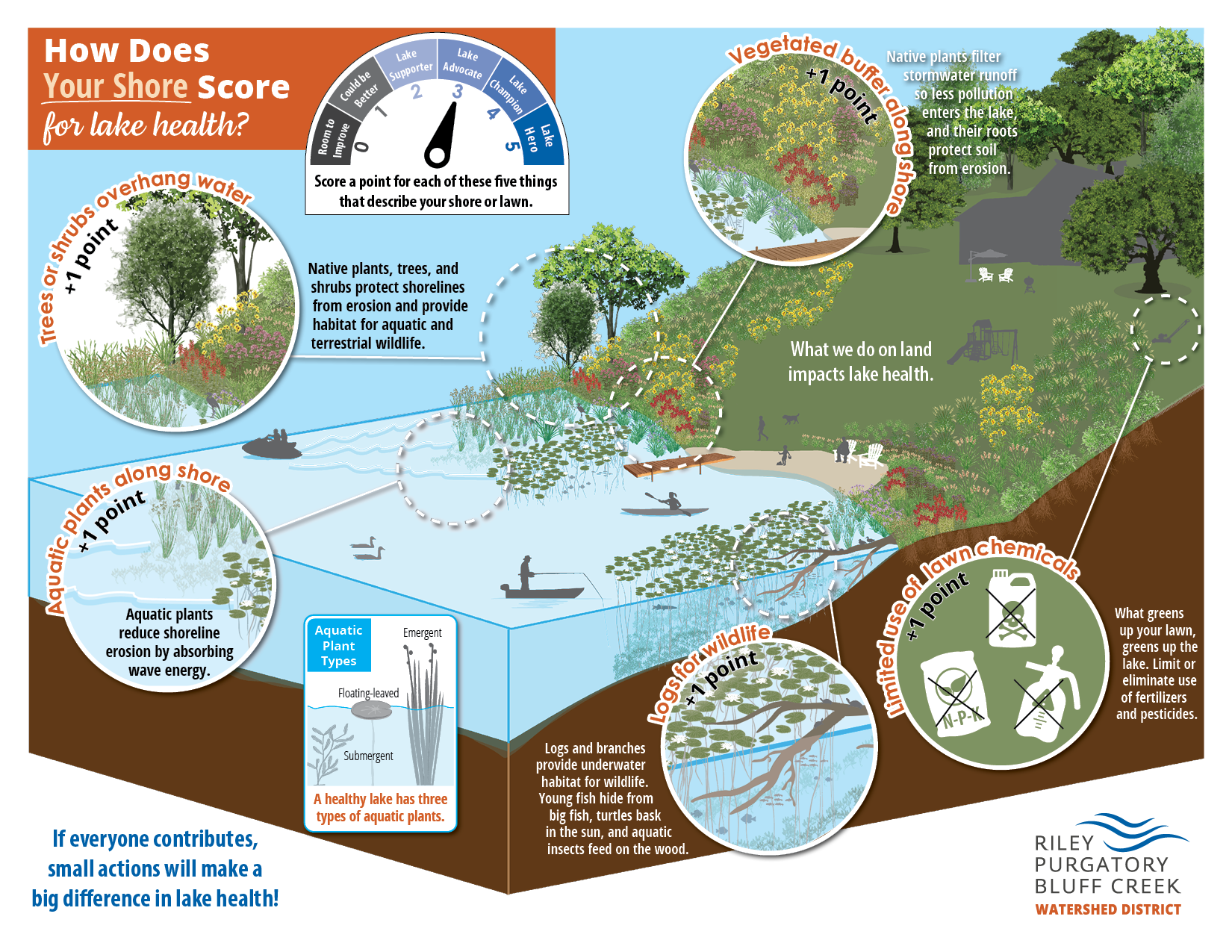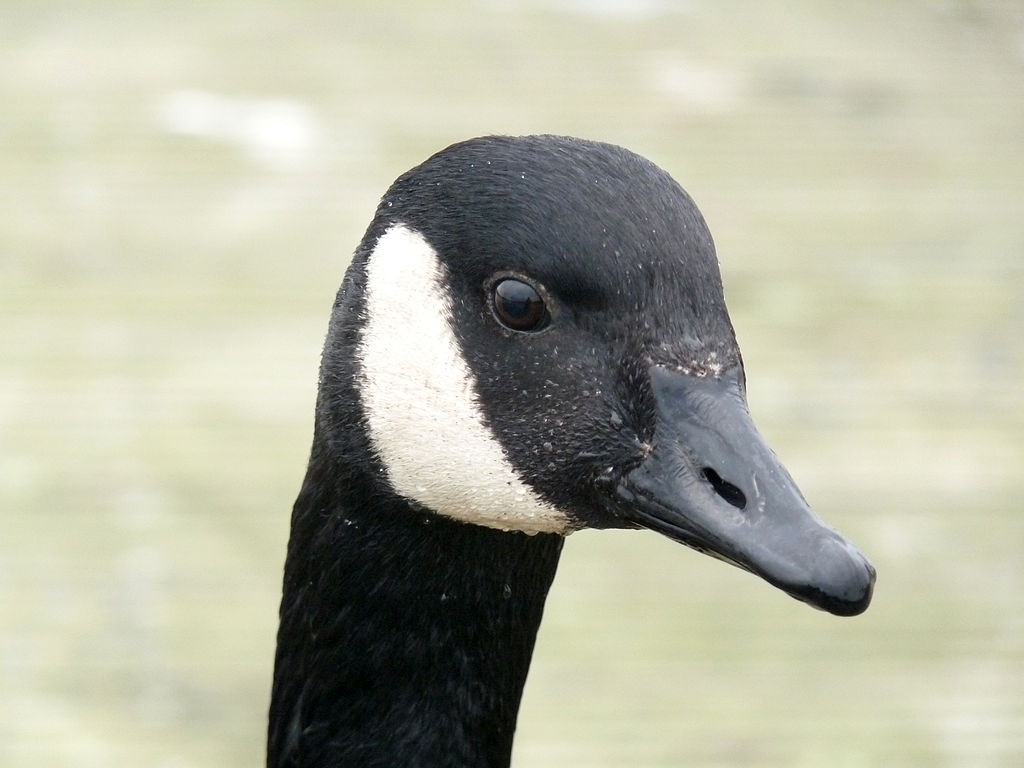Shoreline

Did you know that a natural shoreline is best for lake health?
A natural shoreline reduces runoff and captures pollution before it enters a lake. It's also a diverse ecosystem that creates:
- A buffer against wave action that erodes soil
- Spawning areas for bass, crappie and other fish
- Habitat for birds, butterflies, turtles and frogs
Consider restoring your shore to its natural state! Not only will you protect your shoreline from erosion, but you'll also reduce pollution entering the lake and create an oasis for wildlife.
What is a natural shoreline?
A natural shoreline is a habitat with a diverse mix of plants near and within the water. Native plants maximize benefits such as capturing runoff, filtering pollution, and providing habitat for wildlife. Deep roots of native plants also hold soil in place and use up nutrients that would otherwise cause algae blooms. A natural shoreline creates a buffer between land and water that reduces erosion from wave action.
Permits needed for shoreline work
Modifications to a shoreline such as placement of riprap (rock), re-grading or movement of soil, creating a beach, and installing a retaining wall triggers the District's Rule F and requires a permit from the District. Not sure if the work you want to do requires a permit? Please email Andrew Hartmann.
Aquatic plants for lake health
Native aquatic plants provide valuable services in protecting lake health. They shelter young fish and other small animals, reflect heat to keep water cooler, absorb water pollution, provide food for ducks and other birds, and so much more! Because of these benefits, the Minnesota DNR regulates aquatic plants. If you want to control or remove aquatic plants, you will most likely need a permit. Learn more from the DNR Aquatic Plant Management Program.
Planning to do work along or near your shoreline or off-shore? You likely need a permit. Find out more on our shoreline permit page.
Resources for Lakeshore Residents
More Resources
- Lake Water Quality Data
- Native Plant Finder
- List of native plant suppliers, landscapers, and restoration consultants
- List of native plant nurseries and landscaping consultants

Goose Trouble?

Canada geese can be pests in a backyard, and scare tactics such as pinwheels and scarecrows only work for so long. Looking for a long-term solution? Restore your shore! The tall and thick vegetation of a natural shoreline discourages Canada geese from strolling into your yard.
Questions?
General questions or questions about grant money for a natural shoreline restoration? Visit the Stewardship Grant page.
Shoreline work or permitting questions? Visit the Permits page.
Sign up for our newsletter to stay informed about upcoming educational opportunities and events.
Videos
Lakeshore Management
In February 2021, we partnered with the Minnesota DNR and Stearns County Soil and Water Conservation District to host a webinar about Lakeshore Management. Topics covered include why healthy lakeshores are important, best management practices, and how to choose the right practice for your lakeshore.
Benefits of a Natural Shoreline
This short animated video from Anoka Soil & Water Conservation District (SWCD) provides a great overview of the benefits of a natural shoreline.

